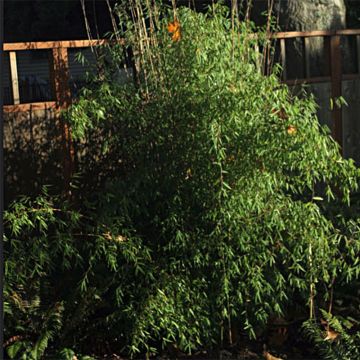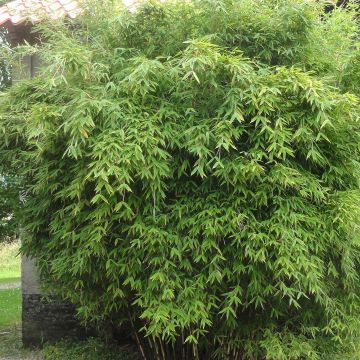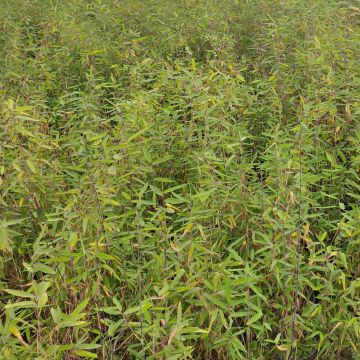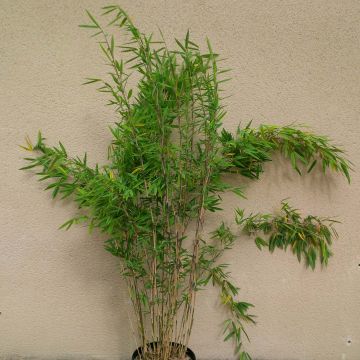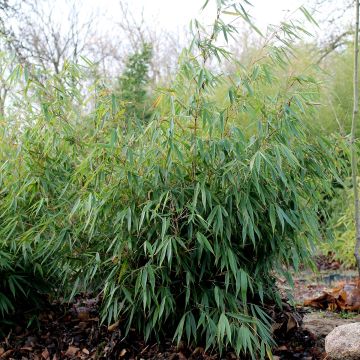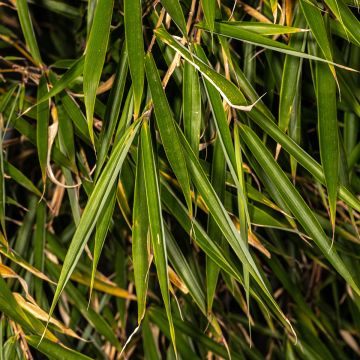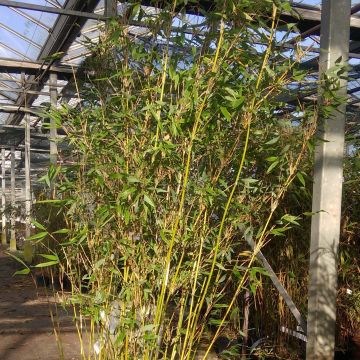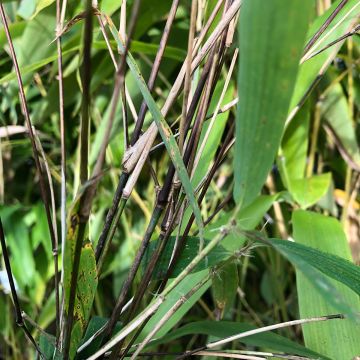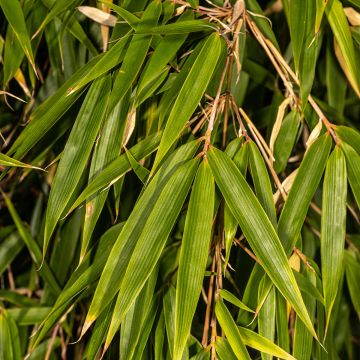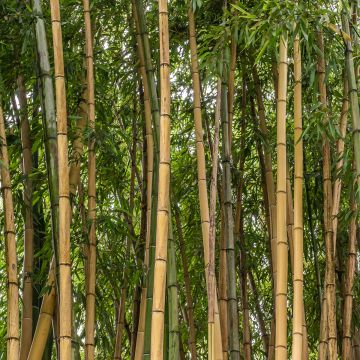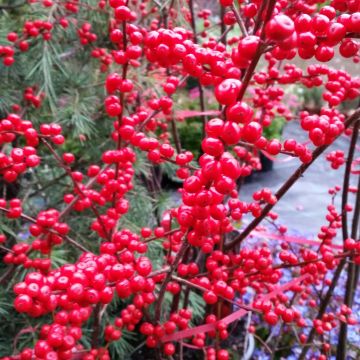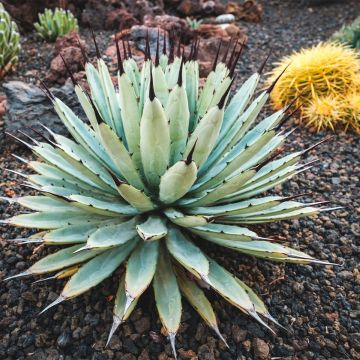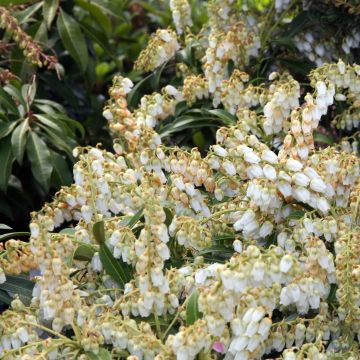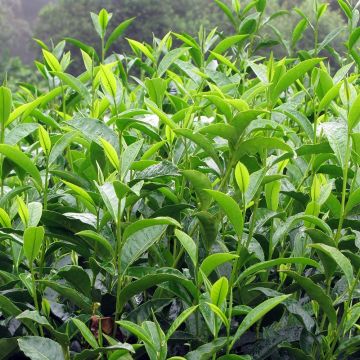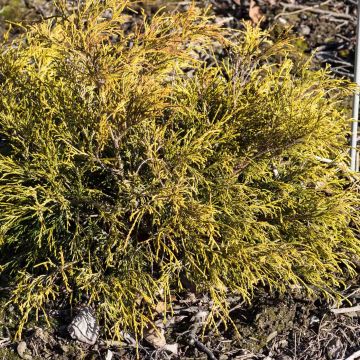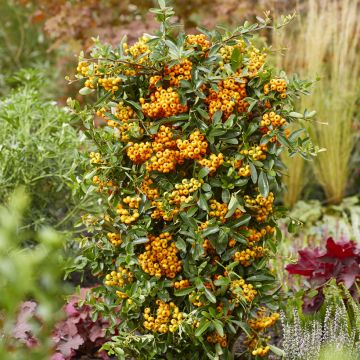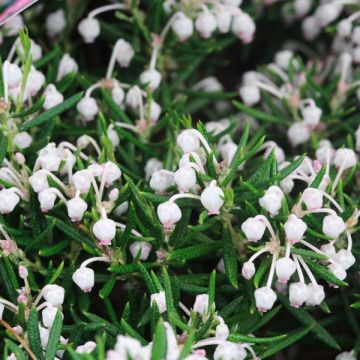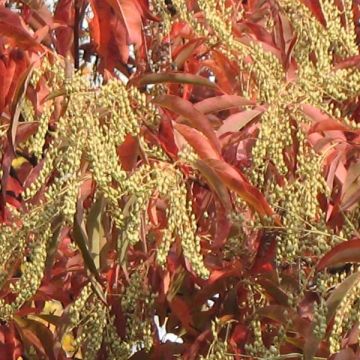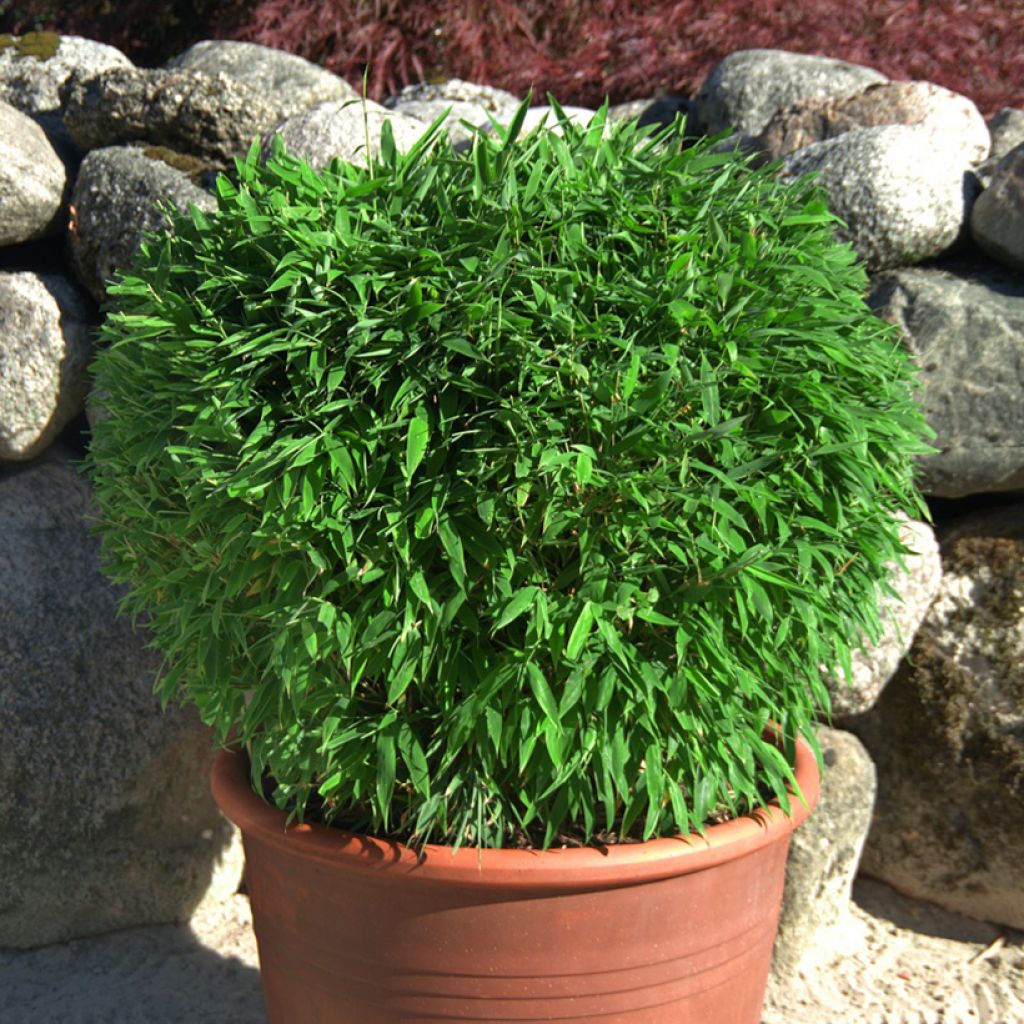

Fargesia Moontears
Fargesia Moontears
Fargesia Moontears ®
Chinese fountain Bamboo
This item cannot be shipped to the selected country
Delivery charge from €5.90
More information
Delivery charge from €5.90
More information
Schedule delivery date,
and select date in basket
This plant carries a 24 months recovery warranty
More information
We guarantee the quality of our plants for a full growing cycle, and will replace at our expense any plant that fails to recover under normal climatic and planting conditions.
From €5.90 for pickup delivery and €6.90 for home delivery
Express home delivery from €8.90.
Does this plant fit my garden?
Set up your Plantfit profile →
Description
Fargesia Moontears is a small-sized non-running bamboo with a variety of possible uses. It tolerates pruning very well, and can be shaped into topiaries, planted in the ground or in a pot, or used as a low or medium hedge. Its abundant small leaves have a beautiful green colour and form a dense clump of foliage. This plant is perfectly cold resistant, it thrives in both sun and shade, and can be easily grown in ordinary soil, as long as it is well-drained. It also looks beautiful in a container on a patio or balcony, or as a standalone clump in a small garden.
Fargesia belongs to the Poaceae family, formerly known as Gramineae. It produces woody stems that develop from a non-running rhizomatous rootstock, known as clump-forming. In this type of bamboo, the particularly short internodes of the rhizomes develop slowly at the periphery of the rootstock, which gradually widens. They also develop towards the centre of the clump, which remains very dense without thinning out in the middle. Another great advantage is that there is no risk of being invaded by rhizome shoots away from the main clump.
The cultivar 'Moontears' is a recent horticultural variety from the Well Born Bamboo Africa range, obtained through sowing and selection of the best specimens at the beginning of the 2000s. Originally from China, it is not expected to flower again for at least 90 years (which will result in its death, such is the fate of bamboos).
Due to a genetic peculiarity, the stems of this bamboo almost never reach 2m (7ft) in height, as the tip (the terminal bud) tends to spontaneously abort. The young, very thin canes, measuring about 8mm in diameter, do not therefore lengthen each year like in other varieties. Their determinate growth also explains the density of this bamboo, whose foliage remains dense even at the base. It also responds very well to pruning, becoming even denser, and ultimately benefits from being shaped rather than left to grow freely.
Its small leaves, 6cm (2in) long and 0.6cm wide, have an intense green colour, which is very ornamental. The slender culms are also green and very close together, making them particularly suitable for pruning. This bamboo can therefore be shaped from 40cm (16in) to 1m (3ft) in height, either as a low square hedge or as a topiary in the shape of a ball or cone. Pruning twice a year will help maintain the desired shape. On the other hand, it would be unwise to let it grow freely to form a clump, partly because its growth is relatively slow, and partly because it will be less dense and less attractive above 1.5m (5ft).
Very hardy, down to -23°C (-9.4°F), capable of growing in both sun and shade, not susceptible to diseases or particular insect sensitivities, this variety can advantageously replace boxwood, which has been attacked by the box tree moth for years, to create superb modern topiaries. Thriving in neutral to acidic soils, tolerating some limestone, it is also very well suited for container gardening to decorate a balcony or patio.
This unique bamboo is destined to be pruned into a hedge, square, sphere or cube, according to your inspiration. Non-invasive and compact, it will fit perfectly in a small garden, as well as in a contemporary setting. You can accompany it with other sculptural plants or topiary plants, such as Ilex crenata 'Green Lustre', a crenate holly with shiny dark green foliage, which will stand out well from the bamboo. Lonicera nitida 'Lemon Beauty', a shrubby honeysuckle with variegated green and lemon yellow foliage, will also be a good companion to create a topiary scene. If you plant it in a pot on a patio, Cotinus coggygria 'Golden Lady', a small wig tree with rounded foliage that changes from orange-yellow to golden and then back to orange in autumn, will bring dynamism to the scene.
Fargesia Moontears in pictures
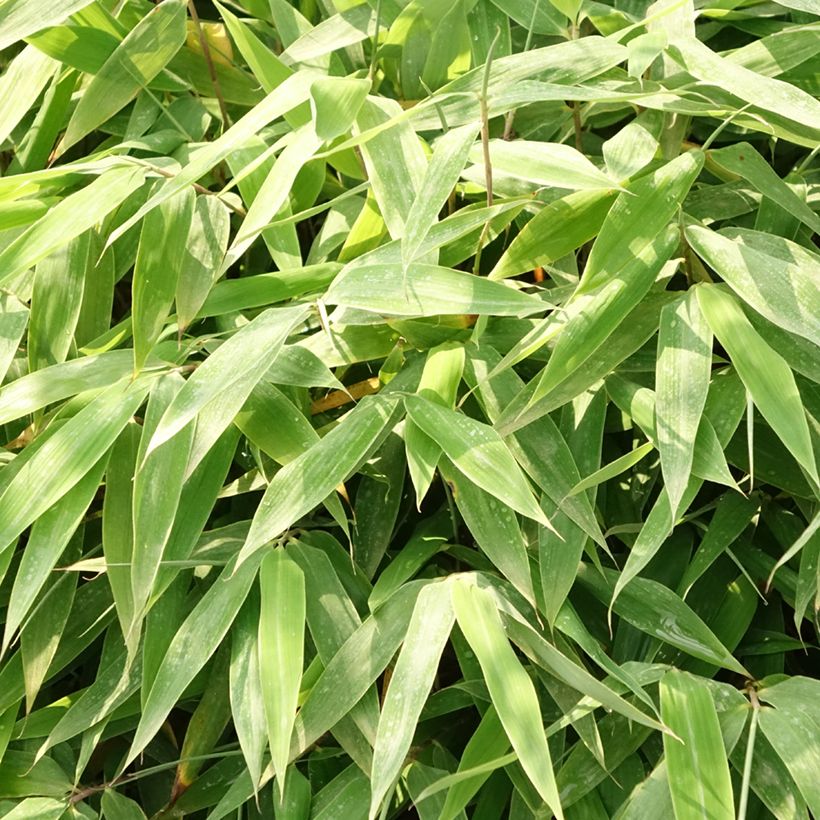

Plant habit
Foliage
Botanical data
Fargesia
Moontears ®
Poaceae
Chinese fountain Bamboo
Cultivar or hybrid
Other Non-spreading Bamboos
Planting and care
Grown in containers, bamboo can be planted at any time of the year, except during frost. However, the best planting period is late summer and autumn, when the soil is warm and rainfall is more frequent. The planting distance depends on how you will use your bamboo: for a mass planting, allow a gap of 0.8 to 1m (3 feet) between each plant. For a hedge, this distance is reduced to 0.6m (2ft) for this Moontears variety.
In general, bamboo prefers rich, well-drained soil that remains moist, either acidic or neutral. They can tolerate slightly alkaline soil, depending on the variety.
During planting, make sure to loosen the soil and moisten the root ball by soaking it in a bucket for fifteen minutes before planting. You can also add well-decomposed compost and rake it into the surface. Watering should be done regularly, especially during the first year in the ground and constantly if your bamboo is grown in a pot. The establishment period may seem a bit long, but don't worry, bamboo needs some time to establish its roots. This variety also has relatively slow growth compared to others.
This bamboo does not spread, so the installation of a rhizome barrier (thick and resistant polypropylene film) is optional.
As for maintenance, apart from pruning twice a year, this bamboo is not demanding: remember to weed around the base, at least during the first few months until its dead leaves form a natural mulch on the ground. Adding nitrogen fertiliser (well-decomposed manure or liquid fertiliser) in spring and autumn can be beneficial.
Planting period
Intended location
Care
This item has not been reviewed yet - be the first to leave a review about it.
Evergreen shrubs
Haven't found what you were looking for?
Hardiness is the lowest winter temperature a plant can endure without suffering serious damage or even dying. However, hardiness is affected by location (a sheltered area, such as a patio), protection (winter cover) and soil type (hardiness is improved by well-drained soil).

Photo Sharing Terms & Conditions
In order to encourage gardeners to interact and share their experiences, Promesse de fleurs offers various media enabling content to be uploaded onto its Site - in particular via the ‘Photo sharing’ module.
The User agrees to refrain from:
- Posting any content that is illegal, prejudicial, insulting, racist, inciteful to hatred, revisionist, contrary to public decency, that infringes on privacy or on the privacy rights of third parties, in particular the publicity rights of persons and goods, intellectual property rights, or the right to privacy.
- Submitting content on behalf of a third party;
- Impersonate the identity of a third party and/or publish any personal information about a third party;
In general, the User undertakes to refrain from any unethical behaviour.
All Content (in particular text, comments, files, images, photos, videos, creative works, etc.), which may be subject to property or intellectual property rights, image or other private rights, shall remain the property of the User, subject to the limited rights granted by the terms of the licence granted by Promesse de fleurs as stated below. Users are at liberty to publish or not to publish such Content on the Site, notably via the ‘Photo Sharing’ facility, and accept that this Content shall be made public and freely accessible, notably on the Internet.
Users further acknowledge, undertake to have ,and guarantee that they hold all necessary rights and permissions to publish such material on the Site, in particular with regard to the legislation in force pertaining to any privacy, property, intellectual property, image, or contractual rights, or rights of any other nature. By publishing such Content on the Site, Users acknowledge accepting full liability as publishers of the Content within the meaning of the law, and grant Promesse de fleurs, free of charge, an inclusive, worldwide licence for the said Content for the entire duration of its publication, including all reproduction, representation, up/downloading, displaying, performing, transmission, and storage rights.
Users also grant permission for their name to be linked to the Content and accept that this link may not always be made available.
By engaging in posting material, Users consent to their Content becoming automatically accessible on the Internet, in particular on other sites and/or blogs and/or web pages of the Promesse de fleurs site, including in particular social pages and the Promesse de fleurs catalogue.
Users may secure the removal of entrusted content free of charge by issuing a simple request via our contact form.

































